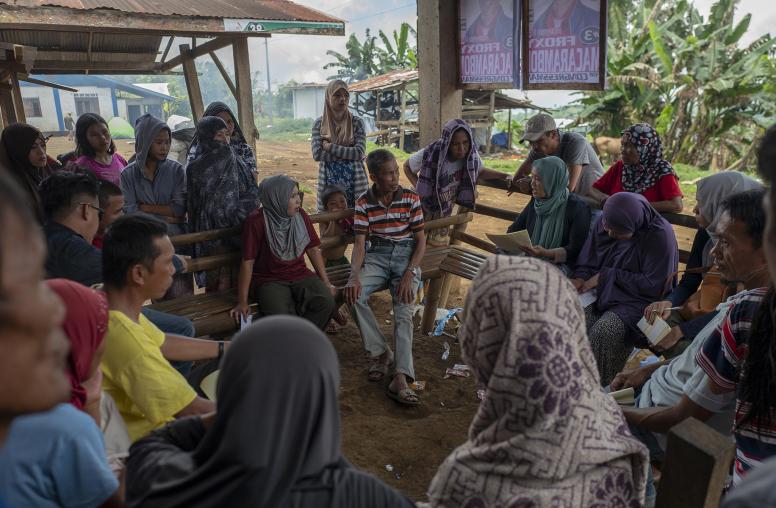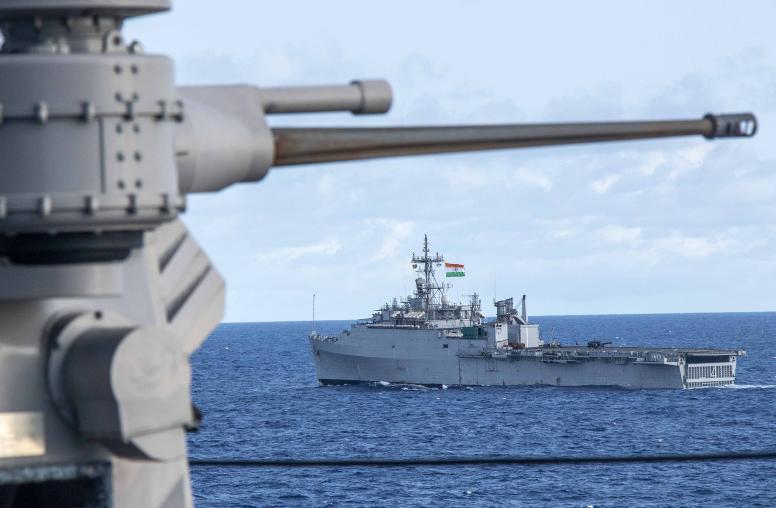Behind the Numbers: Assessing Indices of Peace, Conflict and Instability
Can peace and stability be measured? If so, what are some of the most helpful indicators for determining at-risk countries and regions? What is the significance of resulting rankings and changes from year to year?
Can peace and stability be measured? If so, what are some of the most helpful indicators for determining at-risk countries and regions? What is the significance of resulting rankings and changes from year to year?
On September 17, 2007, USIP hosted a public event to explore these and related questions. The panel featured three indices that attempt to quantify aspects of countries' peacefulness, conflict, and instability: the Failed States Index, the Peace and Conflict Instability Ledger, and the Global Peace Index. The panel examined the meaning, methodologies, and utility for policymakers and researchers of these and other indices. This USIPeace Briefing summarizes the discussion at this event.
The Failed States Index
Pauline H. Baker, president of the Fund for Peace, discussed the Fund’s work with the Failed States Index (FSI). Adopting an ‘immunological’ approach to the study of internal conflict, the FSI offers a diagnosis of failed states in an effort to contribute to the prevention of war. Using CAST (Conflict Assessment System Tool), a methodology designed by the Fund for Peace, the FSI measures a country’s risk for internal conflict. Twelve indicators assess social, economic and political/military drivers of conflict. CAST also assesses five core institutions in terms of their ability to cope with internal pressures, but this analysis is not included in the FSI.
Currently in its third year, the 2007 FSI measured 177 countries. (All 177 scores are on the Fund for Peace website. However, only the top 60 at-risk countries are included in FSI published in the July/August issue of Foreign Policy magazine.) The top five ranked (i.e., the worst performers) were Sudan, Iraq, Somalia, Zimbabwe, and Chad. Baker reviewed the ways in which the FSI’s findings could be used for analysis, sharing examples of trend analyses, indicator comparisons, and country comparisons. In addition to providing a tool for risk assessment and forecasting of conflict, Baker emphasized the FSI’s ability to provoke debate and discussion, especially in those countries that rank high on the index. More information can be found at www.fundforpeace.org.
The Peace and Conflict Instability Ledger
Joseph Hewitt, assistant director of the Center for International Development and Conflict Management, presented the Peace and Conflict Instability Ledger (PCIL), an index that aims to forecast, within three years, the risk of future state instability. Intended to make quantitative analysis in conflict and development studies accessible to policymakers, the index is designed to be transparent and replicable. The PCIL assessed a total of 160 countries in five indicator areas: regime consistency, infant mortality, economic openness, militarization, and neighborhood war. The rankings, though diagnostic and not predictive, are aimed at aiding policymakers’ ability to identify which countries are at the highest risk, and which areas should receive attention. The top five ranked were Afghanistan, Iraq, Niger, Ethiopia, and Liberia.
Hewitt noted that Africa stood out, with only seven of 51 African states scoring in the low risk category. Nineteen of the top 25 high- risk countries are from Africa. He revealed that Mali, surprisingly, ranked seventh overall despite other studies that categorized the country as fairly stable. Analysis showed that this was due to high infant mortality rates, illustrating a case in which the index identified a specific area in need of improvement. More information can be found at www.cidcm.umd.edu/pc.
The Global Peace Index
Chic Dambach, the president and CEO of the Alliance for Peacebuilding, provided an overview of the Global Peace Index (GPI). Standing in for Steve Killelea, an Australian entrepreneur who initiated development of the GPI, Dambach spoke of Killelea’s desire to further the study of peace.
While there is value in the study of conflict, the GPI seeks to better understand peace in an effort to stimulate research and debate. Two questions drive the GPI: what are the most peaceful countries; and, what are they doing that contributes to their peaceful status? Working with the Economist Intelligence Unit (EIU), the GPI employs existing data and EIU analysts’ judgments to assess the peacefulness of 121 countries. Twenty-four indicators rated countries’ performance in three broad areas: ongoing domestic and international conflict; safety and security; and militarization. Defining peace as the ‘absence of violence’, the GPI evaluates a country in terms of its negative peace, positive peace, and culture of peace.
Dambach discussed several specific findings from the GPI, noting that the United States scored low at 96 due mainly to high levels of domestic conflict and high military spending. Ireland’s ranking at fourth illustrated how a country once considered far from peaceful was transformed. The top five ranked were Norway, New Zealand, Denmark, Ireland, and Japan; while Iraq, Sudan, Israel, Russia, and Nigeria ranked in the bottom five. Dambach said that, in general, small, politically stable, democratic countries topped the rankings; most countries in the top rankings are members of a supranational body; and that education was a significant indicator. More information can be found at www.visionofhumanity.com.
Discussion
Program Officer Lawrence Woocher, of the Center for Conflict Analysis and Prevention, opened the discussion by reminding the audience that the three indices presented were a sampling of the numerous indices available. He referenced other indices such as the State Fragility Index developed by Jack Goldstone and Monty Marshall in collaboration with USAID and UNDP’s Human Development Index as well as the various measures employed by the World Bank, Transparency International, Freedom House, and other organizations.
Broadening the debate, Woocher prompted those present to reflect on indices collectively. He suggested that there was significant room for improvement across the board, especially in terms of linking the rankings to policy options and interventions. He also asked how one should interpret significant differences in how a country ranks on the various indices. For example, Senegal ranked 117 (of 177) on the FSI, 29 (of 160) on the PCIL, and 65 (of 121) on the GPI (i.e., 56th least peaceful). This type of disparity suggests more cross-index analysis is needed.
Woocher outlined several characteristics of an ideal index, including: explicit focus and purpose; transparent methods; publicly available data; easy comprehension of differences in scores across countries, and in a country’s score across multiple years; composites that are easy to unpack; comprehensiveness in coverage of countries; and parsimony.
The continual development of indices of peace, conflict and instability is part of a broad movement to “make the important measurable,” as former Secretary of Defense Robert McNamara urged, “instead of making the measurable important.” As they stand, indices remain a valuable tool in raising questions for debate and dialogue, as well as bringing attention to global peace and conflict issues.
About the Author
This USIPeace Briefing was written by Sarah Bessell, a research assistant in the Center for Conflict Analysis and Prevention at the U.S. Institute of Peace. The views expressed here are not necessarily those of the Institute, which does not advocate specific policies.




